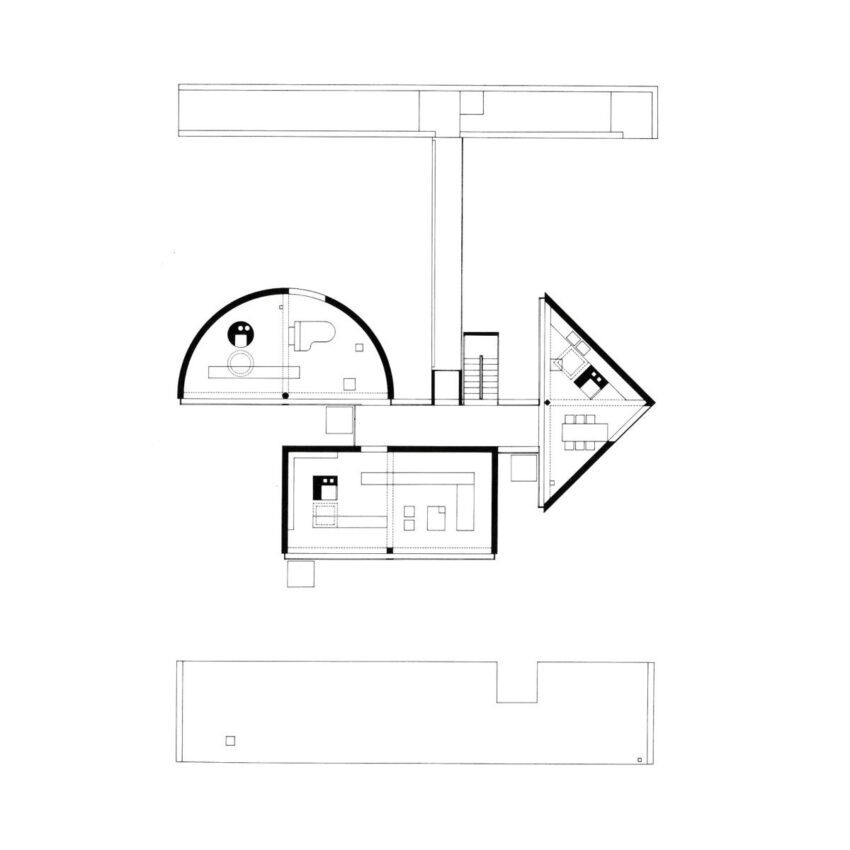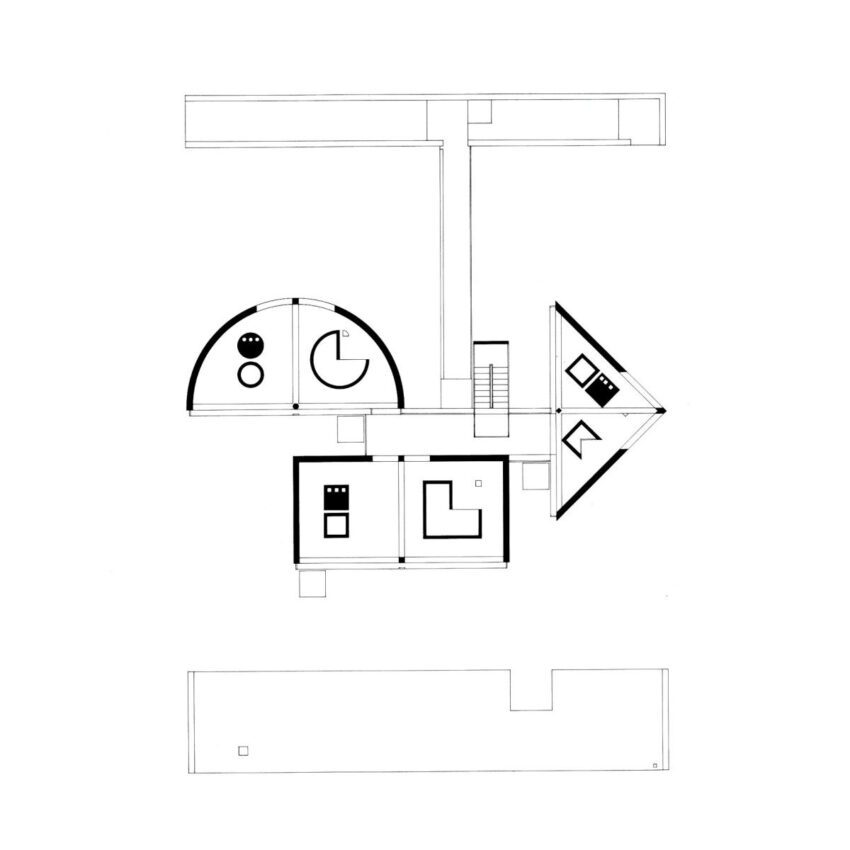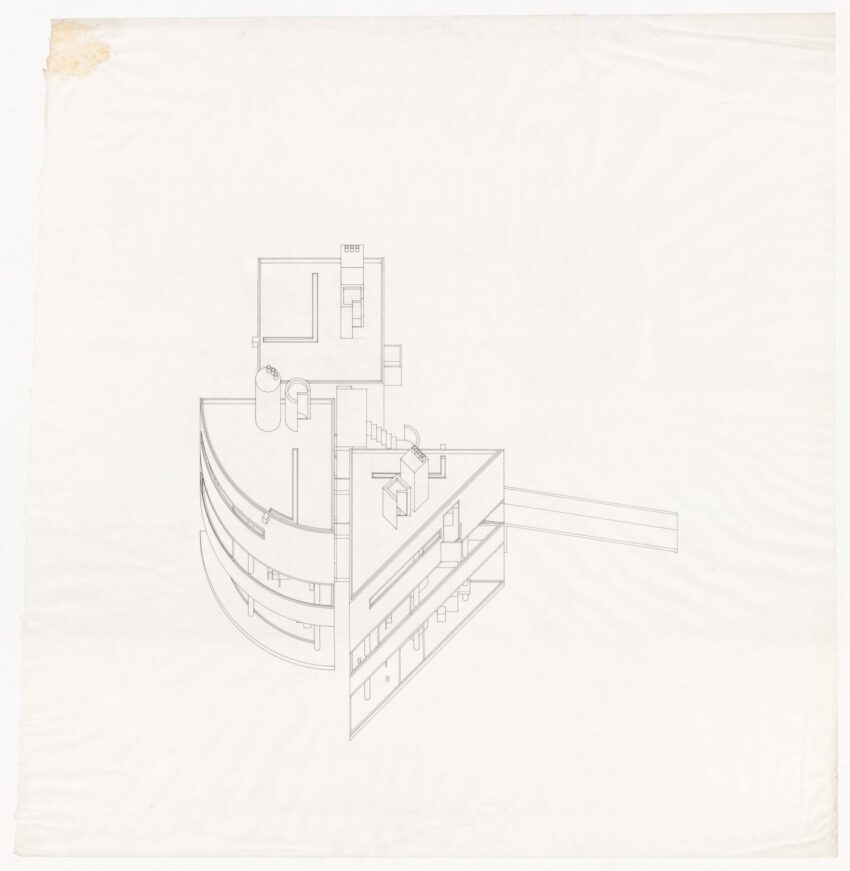John Hejduk, a name synonymous with the evolution of architectural theory and practice in the 20th century, left an indelible mark on the landscape of modern architecture. His designs, intellectual contributions, and teachings continue to influence contemporary architecture. One of his seminal works, the ‘One-Half House,’ encapsulates the subtle sophistication and exploration of form and space characteristic of his oeuvre. It stands as a testament to Hejduk’s mastery of the art of architectural subtraction, achieving more with less and pushing the boundaries of how we perceive and inhabit space.
One-Half House Technical Information
- Architects: John Hejduk
- Location: Conceptual Project
- Topics: Unbuilt Architecture, Primitive Shapes
- Project Year: 1966
- Drawings: © John Hejduk
Idea-Concept
One half of a square
– John Hejduk1
One half of a circle
One half of a diamond
One-Half House Plans
Designing the ‘One Half House’
The ‘One-Half House,’ conceptualized in the 1960s, epitomizes Hejduk’s philosophy of “mostest” with the “leastest.” The design revolves around the notion of subtraction rather than addition, a strategy that enables an exploration of spatial potential within minimal means. The structure pared down to its simplest form, is divided longitudinally, with one half enclosed and the other open, establishing a dynamic interplay between interior and exterior spaces. This radical reduction is not a compromise on functionality but rather a celebration of the potential within simplicity.
The enclosed half accommodates essential living spaces – living room, kitchen, bedroom – organized linearly, with each room providing a distinct vista towards the open side. The open half, devoid of the physical constraints of walls or ceilings, serves as a flexible extension of the interior, capable of transforming as per the needs and whims of the inhabitant. This ingenious configuration poses a continuous dialogue between the built and the unbuilt, the private and the public, the contained and the liberated.
Influence of Cubist Principles
Hejduk’s design philosophy behind the ‘One-Half House’ carries the echoes of the principles of Cubism, an artistic movement that revolutionized European painting and sculpture. By fragmenting objects into geometric forms and presenting multiple viewpoints within a single plane, Cubism challenged conventional perceptions of space and form. Similarly, Hejduk’s ‘One-Half House’ disrupts conventional architectural norms, presenting a dwelling not as a complete, enclosed entity but as a fragmented, partially open form.
The ‘One-Half House’ reflects the simultaneous existence of diverse perspectives within a unified space akin to the Cubist canvas. The linear organization of rooms provides varied and layered views across the open side, a celebration of multiple viewpoints inherent to the Cubist philosophy. Furthermore, the abstract geometrical form of the house, reduced to a longitudinal half, resonates with the geometric abstraction that is at the heart of Cubist art.
Half a century after its inception, the relevance of the ‘One Half House’ resonates in the context of today’s architectural discourse. With contemporary design principles leaning towards sustainable, minimal, and flexible living spaces, Hejduk’s masterpiece offers insightful lessons.
The subtractive approach adopted in the ‘One-Half House’ presents an attractive strategy for achieving efficiency and sustainability. The open half, while contributing to the overall spatial experience, also allows for passive solar gain, natural ventilation, and integration with the natural landscape, inherently promoting sustainable living.
Moreover, the ‘One-Half House’ provides a blueprint for a flexible architecture that responds to changing user needs. The open half of the house, acting as a spatial extension, can transform and adapt according to changing requirements and environmental conditions. This fluidity of space addresses the contemporary need for adaptable and resilient architecture in an increasingly unpredictable world.
The Spatial Experience: Transcending Conventional Boundaries
The ‘One-Half House’ nudges us to reconsider the notion of enclosure in architectural design. Traditionally, a dwelling is defined by its boundaries, physical barriers that segregate the interior from the exterior, private from public. However, Hejduk’s house challenges this notion by erasing one-half of the conventional boundary, thus creating a seamless flow between the interior and exterior spaces.
This boundary dissolution introduces a multi-layered spatial experience where the inhabitant can engage with the structure and the surrounding environment simultaneously. It promotes a sense of freedom and openness, making the dwelling not just a place for shelter but a medium for the individual to interact with nature, weather, and daylight, enhancing the overall sensory and emotional experience.
Materiality
Hejduk’s ‘One-Half House’ is also noteworthy for its astute use of materials. The design employs basic construction materials such as concrete, steel, and glass in their raw and authentic state. The material palette is kept minimal to allow the house’s form and spatial arrangement to remain the main focus.
In the context of contemporary architecture, where the authenticity of materials and tactile experience is gaining importance, the ‘One-Half House’ can serve as a potent example. It shows how the richness of architecture doesn’t solely lie in the ostentation of materials but in the purity of form, the honesty of materials, and the dialogue between spaces.
One-Half House Image Gallery
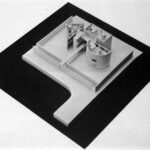
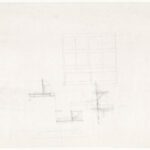
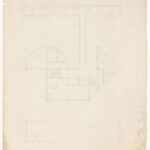

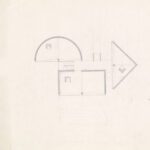
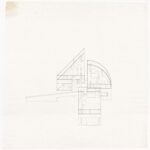
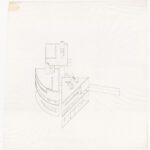
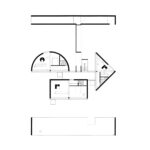

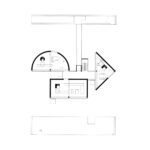
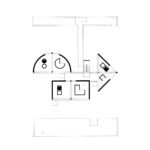
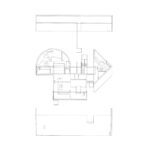

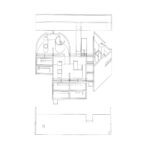
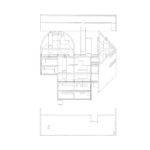
About John Hejduk
John Quentin Hejduk (1929-2000) was a prominent American architect, artist, and educator noted for his theoretical contributions and his exploration of the psychological and emotional dimensions of architectural design. Born in New York, he studied at the Cooper Union School of Art and Architecture and Harvard University’s Graduate School of Design. Early in his career, Hejduk worked with distinguished architects like I.M. Pei and A.M. Kinney. Despite few of his designs being built, his theoretical and conceptual work, presented through writings, drawings, and models, has significantly impacted architectural thought. His projects, including the Berlin Tower and Courtyard (1988), the Wall House (1974), and the ‘One-Half House’ (1966), often defied architectural norms and examined themes of fragmentation, layering, and multiplicity, redefining traditional conceptions of space and form.
Notes & Additional Credits
- The Complexities of John Hejduk’s Work by J. Kevin Story


